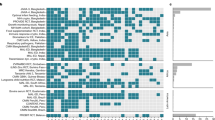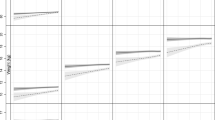Abstract
Objective: Estimate the risk of linear growth retardation during the first two years of life as a result of household social vulnerability.
Setting: Families who participated in the National Supplementary Feeding Program in the Health Units of the metropolitan area of the city of São Paulo, Brazil.
Subjects: Four hundred and thirty-one index-babies, weighing more than 2500 grams and who had at least one young sibling under the age of five who participated in the Program for a minimum of two years.
Design: The index-babies were divided into two cohorts: 74.9% coming from ‘non-stunted families’ (those with normal height siblings) and 25.1% from ‘stunted families’ (those with stunted siblings). The study design allowed the observation of growth patterns over a period of time and over a childhood growth range. It also allowed the estimation of the stunting and the recovery probabilities at each moment, not only within a given age range. The transition probabilities between ‘stunted’ and ‘non-stunted’ index-babies were estimated. The relative risk ratio (RR) was also calculated.
Results: The prevalence of stunting in the index-babies at 12 and 24 months of age was significantly greater in ‘stunted families’ P<0.001). Probabilities of becoming stunted began to differ from the fourth month on (confidence intervals non-superposed), and were higher for index-babies from ‘stunted families’. The recovery probability of a stunted child was smaller in the ‘stunted families’ cohort after the 12th month of age. From the third month on, the (RR) was always above 1.5.
Conclusion: The family context exposes children to failure in growth in the first two years of life when there are already stunted children in the household.
Sponsorship: Brazilian National Research Council (CNPq Nos 300977/90-5 and 5209115/97-6).
This is a preview of subscription content, access via your institution
Access options
Subscribe to this journal
Receive 12 print issues and online access
$259.00 per year
only $21.58 per issue
Buy this article
- Purchase on Springer Link
- Instant access to full article PDF
Prices may be subject to local taxes which are calculated during checkout
Similar content being viewed by others
Author information
Authors and Affiliations
Contributions
Contributors: Doris LM Lei planned and developed the study design, and was the study coordinator. Adrianna B Ribeiro and Renata D Friere collected the data. Maria ML Escuder was responsible for management data and Ångela T Paes did all the statistical analysis. Doris LM Lei, Sandra P Chaves and Barbara R Lerner wrote the manuscript, and, together with Ångela T Paes, revised the paper.
Corresponding author
Rights and permissions
About this article
Cite this article
Lei, D., Chaves, S., Paes, A. et al. Risk of linear growth retardation during the first two years of life: a new approach. Eur J Clin Nutr 53, 456–460 (1999). https://doi.org/10.1038/sj.ejcn.1600776
Received:
Revised:
Accepted:
Published:
Issue Date:
DOI: https://doi.org/10.1038/sj.ejcn.1600776



